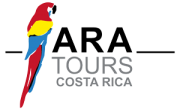
Welcome to Costa Rica!
We are your local agency in Costa Rica and would like to give you some important tips to prepare your trip.
Welcome Message
Dear Customers:
Now there are only a few days left and your Costa Rica trip can start!
I warmly welcome you today. My name is Daniel Küng and I am the manager of ARA Tours your local agency in Costa Rica. Together with my team, we make sure that your journey goes smoothly and turns into a beautiful experience. If you have questions or need assistance on the way, we are available 24 hours a day, 7 days a week.
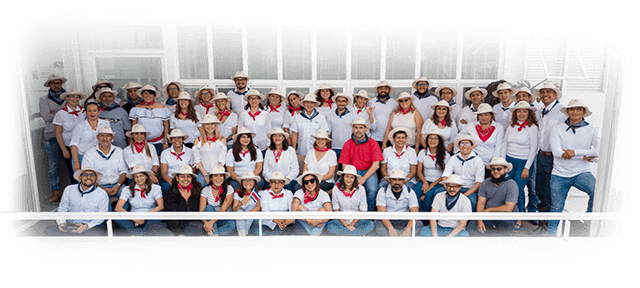
This video series will give you brief and concisely information on the most important topics to prepare your journey:
- The choice of luggage and what may not be missing in it
- Arrival process at the airport in San José
- Tips on how to make your trip as sustainable as possible and
- Everything about safety
You can also download useful documents and checklists from this website.
For us it is important that we can reach you during the journey by e-mail, Whatsapp or SMS. Therefore we ask you to inform us about your preferred communication channel. You can do that directly on this website.
If you have not already indicated this at the time of booking, now is the opportunity to point out conditions that could influence the operation of your trip, such as: As food preferences, intolerances, allergies or physical limitations.
We guarantee you to use this data exclusively for the planning and communication during your journey and will delete the data afterwards.
Our agency has been awarded with the sustainability certificate CST and we are also certified as a climate-neutral company. By voluntarily offsetting the emissions of your flight, you are doing your part to make your Costa Rica trip as sustainable and climate-friendly as possible.
So, now we wish you a wonderful journey and a very good flight.
Pura Vida and see you soon. We are looking forward to your visit.
Here you can get in touch with us!
Important contact information
ARA Tours is available to assist you during our office hours from Monday to Friday from 7:00 a.m. to 6:00 p.m. in English, German, Spanish, and French. On weekends and public holidays, you can reach us from 8:00 a.m. to 4:00 p.m.
You can contact us at our main office phone: +506-2232-0400
During the office hours you can reach us via text or audio message on Whatsapp at +506-8893-3863.
To contact us in urgent matters outside office hours and on international holidays you can contact us by phone or via Whatsapp at the emergency number: +506-8946-8222.
Important Phone Numbers
- Emergencies: 911
- Juan Santamaría Airport: +506-2437-2400
Embassies:
- England: +506-2258-2025
- Netherlands: +506-2296-1490
- Belgium: +506-2289-5058
- United States: +506-2519-2279
If you would like us to contact you, please fill out the form below
Contact us via WhatsApp here:
WhatsappYour Arrival in Costa Rica
¡Hello!
Here we will teach you, everything you should know from getting off the plane until you receive our welcome service at the airport of San José.
- After landing, you pass through Migration for your passport control.
- Your next stop is the baggage carousel indicating the flight and airline number you travelled on.
- Once your baggage is identified, please continue through the customs area and take the exit to the right.
- Just where you exit the airport building, we will be waiting for you with an ARA Tours sign and this yellow t-shirt, so it will be easy for you to identify us.
* Only valid if you have booked an arrival transfer. This service can only be booked at Juan Santamaría Airport. - During this first meeting, we will provide you with all necessary information for your trip and take you to the transfer bus which will take you to your city hotel.
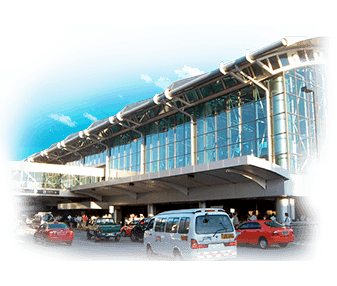
Important tips at the airport:
How do I identify the ARA Tours guide?
- The guide is uniformed with a yellow shirt and a label with the ARA Tours logo
* Only valid if you have booked an arrival transfer. This service can only be booked at Juan Santamaría Airport.
What can I do if my luggage does not arrive?
- On the right side of the carousel area where you pick up your baggage is the baggage claim office. There you can make your claim by filling out the report form, the staff will be helping you by coordinating the location with the airline and delivery of the luggage. It is good that in addition to your data, you also provide our phone number (+506-2232-0400) and e-mail (
This email address is being protected from spambots. You need JavaScript enabled to view it. ). Although we should clarify that we also depend on the information provided by the airline; we cannot expedite the arrival of the luggage, but we can mediate in the process of sending it to the place where you will be within the country.
Please contact us at +506-2232-0400 orThis email address is being protected from spambots. You need JavaScript enabled to view it. to be informed of your situation.

Can I change money at the airport?
- In Costa Rica, dollars are accepted in many places, although we recommend you change your money in your hotel or in a local bank.
Can I use the luggage service?
- If you are going to use this service, we recommend you to hire the service within the airport, not in the departure area.
Thank you very much for using our services. We wish you a nice trip!
Security in Costa Rica
Here you will find some tips about your safety during your trip through Costa Rica.
Costa Ricans are very open, helpful and happy people and will certainly inspire you with their "Pura Vida" lifestyle. This relaxed way of dealing with people and the seemingly peaceful nature usually rightly convey a sense of security and lightheartedness. And although Costa Rica is relatively a safe country to travel, you should use common sense and follow the international safety tips, but without spoiling the joy of travel. Here we go:
- Tip #1: Opportunity makes thieves. Do not carry expensive jewelry or a lot of cash around with you. Credit cards are accepted everywhere. Do not leave your valuables unattended. This is especially true at the beach, when checking in or out in hotels, in restaurants and in busy places.
- Tip #2: If you're discovering Costa Rica with a hired car:
- Park only in guarded parking lots (so-called "Parqueos Públicos"), hotels and restaurants and take the valuables always with you.
- Do not transport hitchhikers.
- Take care of your valuables in the event of a puncture, especially if assistance is offered.
- In Costa Rica it gets dark all year round at 6pm, so plan to arrive at the destination in daylight.
- In a tropical heavy rain, you better seek a safe place and wait until the view is better again.
- Follow the traffic rules and be patient on the narrow and winding roads with slow moving trucks.
- Tip #3: As for the local safety at the hotels. Refrain from participating in activities or excursions that someone offers you on the street. Check beforehand if the provider has an official license from the Ministry of Tourism (ICT) or a Certificate for Sustainable Tourism (CST). These companies are committed to ensuring your safety. Or, of course, you can always contact us.
- Tip #4: Please visit beaches at night only in groups
- Tip #5: The many beautiful beaches on the Caribbean and Pacific coast sometimes make you forget that there are potential dangers here as well. Rip currents are relatively common and can be detected by good observation. But do not rely on your eye and ask the local people or surfers if it is safe to swim. If you still get into a current, it is very important stay calm and do not swim against the current. Let yourself drift and when the current subsides, swim left or right away from the current and then with the waves back to the beach.
- Tip #6: A bath in one of the many rivers is a unique experience. However, ask locals first whether it is safe to swim. When thunderstorms are forming in the mountains or the surrounding area or if the water turns brown, move away from the river immediately because a flash flood could happen.
- Tip #7: Avoid jumping into the sea or rivers. You can not know if the water is deep enough or if there is a reef or tree trunk under the surface of the water.
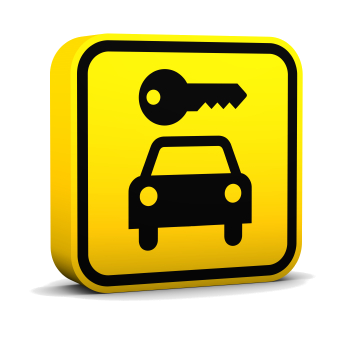
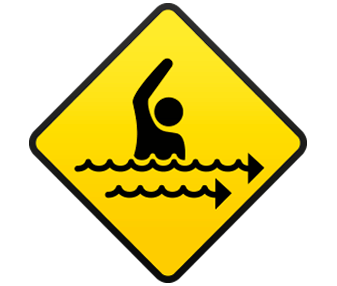
So, now enough about the risks. Costa Rica is a fairly safe destination. Look forward to it! See you soon and Pura Vida.
Important Links
Costa Rica Safety Travel: Swimming https://www.youtube.com/watch?v=ZaPwNWwos2s
Rip Currents - Tips for swimmers https://www.youtube.com/watch?v=BTOaf_bp6iY
Sustainability in Costa Rica
-
Recommendations so that your visit to Costa Rica is enjoyable and at the same time has a lower impact on the environment
Hello! My name is Jennifer Castro and I am in charge of the Environmental and Social Department of ARA Tours, your local travel agency.
Today I would like to give you some recommendations so that your visit to Costa Rica is enjoyable and at the same time has a lower impact on the environment.
We are facing a new trend of sustainable tourists, who seek to spend their vacations enjoying the natural wonders that a destination offers and, at the same time, try to cause the least possible impact.
In this video, I would like to give you some tips so you can apply them during your stay in Costa Rica:
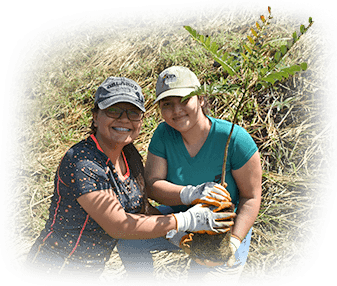
- When you travel with us, you can be sure that we have environmental programs that guarantee that your trip will be realized with high standards of respect and care for the environment.
- It is inevitable to travel and have an impact on a destination, but if you are aware of this and travel responsibly, the impact may be less. To achieve this, verify that the companies that offer you transportation services, such as airlines or rental cars, compensate for their carbon dioxide emissions through reforestation programs in their country or in the destination country.
- During your travels, avoid buying plastic bottles. You can use the same bottle and refill it with water as many times as you want in hotels and restaurants during your entire stay. The water in Costa Rica is drinkable in practically all tourist places, so you will not have a problem in getting the precious liquid.
- Separate all your waste during your trip; look for suitable containers for disposal. If you visit places that do not have proper waste containers, take your waste with you until you find a collection center.
- In hotels, contribute to conserving electricity. When you leave the room, make sure that all electrical equipment (fans, air conditioners, lights) are turned off.
- Preferably combat heat by opening windows and using ceiling fans. Use air conditioners as little as possible, and when you turn them on, make sure all windows and doors are closed. The ideal recommended temperature is between 23°C - 24°C (73-75° F).
- When you eat, take servings in moderation in order to not waste food. When ordering drinks, think if you really need a straw or a plastic stirrer. If you really need one, ask for a reusable or biodegradable straw.
- Conserve water! Turn off the tap when not in use. Do not waste water when brushing your teeth or taking a shower.
There are hotels that tend to change towels and bedding daily. Take the initiative and tell them that they can extend the time for changing these items by more days.
-
Tips on what to do while visiting places in nature, like beaches, parks, and trails
Hello! My name is Kenlly Castro and I am in charge of the Environmental and Social Department of ARA Tours, your local travel agency. Now I will give you some tips on what to do while visiting places in nature, like beaches, parks, and trails:
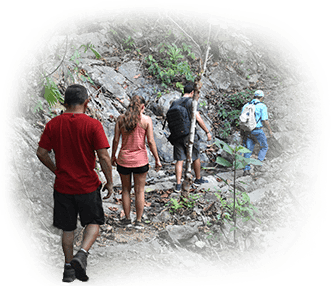
- Do not go off designated trails. Follow and respect all signs.
- Enjoy the landscape and the animals, but do not use your camera’s flash to take pictures of animals because that can disturb them.
- Do not touch plants and walk carefully on the trails. Do not feed any animals as this can alter their behavior.
- Keep the volume of your voice at a low to moderate level. Do not smoke, respect the space you visit. Enjoy the natural environment, do not take any plants or rocks. Leave the place as you found it.
- If you have time to get to know local communities and projects, support the local economy by buying handicrafts. This way you can support keeping these cultural expressions alive. Visit local restaurants so you can get to know the gastronomy of a place.
- Learn and respect the culture of the areas you visit; be respectful in your behavior; know the laws and denounce any act that is against human rights.
-
Why ARA Tours is a travel agency committed to the environment and what we do to achieve that?
Hello! My name is Kenlly Castro and I am in charge of the Environmental and Social Department of ARA Tours, your local travel agency. Now it's time to tell you why ARA Tours is a travel agency committed to the environment and what we do to achieve that.
We have the Certificate of Sustainable Tourism since 2010. This program recognizes the work that companies actively do to mitigate the impacts resulting from their operation, and that strengthen the social, cultural, environmental, economic and development aspects of tourist destinations.
In order to obtain this certification, several elements are evaluated, among them:
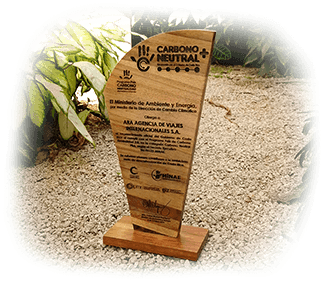
- The physical and biological environment: that is, the interaction that the company has with the natural environment surrounding it.
- The socioeconomic environment: the interaction of the company with nearby communities is analyzed to see if it contributes to the growth and development of the region and generates sources of employment and benefits to local people.
- Service management: this point focuses on the design of tourism products being in line with market trends and country characteristics.
- Client: what is evaluated here are the company’s actions to invite clients to participate in implementing good environmental practices in the places they visit.
Another important aspect to mention is that in 2017 Costa Rica launched its commitment to the Framework of the United Nations Convention on Climate Change to become a Carbon Neutral Country by 2021.
In line with this initiative of the Costa Rica government, in 2018, we started working with this program and committed to reduce and offset greenhouse gas emissions in our office; in addition, we promised to incentivize this program with our suppliers and customers.
In our office, we measure our carbon footprint generated by the consumption of electrical energy in the building, air conditioners, fire extinguishers, the generation of organic and inorganic waste from personnel, and the compensation of air flights for the tourism fairs attended by our sales staff.
Our suppliers also consider their share in the responsibility. Some of the hotels we work with have reforestation programs on their properties – ask about them.
The vehicle fleet that is subcontracted has its respective circulation and maintenance permits. It works with modern vehicles, thus limiting damage to the environment from older models that might show leaks or damage in the emanation of gases.
-
What ARA Tours is doing as a travel agency to reduce its impact on the environment?
Hello! My name is Kenlly Castro and I am in charge of the Environmental and Social Department of ARA Tours, your local travel agency. Now I want to tell you what ARA Tours is doing as a travel agency to reduce its impact on the environment!
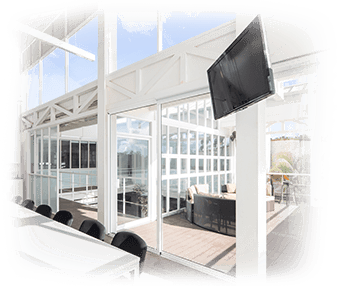
- We have a modern building which has incorporated criteria for the efficient use of energy, water, and materials.
- The building’s design takes into account aspects of the sun and wind, resulting in a design with large windows, louvered windows, and a natural air-flow system, which allow for maximizing natural lighting from the sun.
- There has been a significant replacement of equipment with greater energy efficiency, such as computers, air conditioners and air coolers.
- Water saving equipment has been installed in the bathrooms with smaller capacity toilet tanks, use of dry urinals, and low-flow sinks.
- With our internal staff, we have worked to raise awareness of the measured and conscious use of water, electricity and paper, so we have developed internal signage in the building, reminder activities, competitions, and trainings.
- We have a Solid Waste Management program, where materials that are produced are collected and sorted and subsequently sent to the Authorized Recovery Center.
- Organic waste is composted to produce organic fertilizer that is used in the company's gardens; the surplus is sold to employees.
- Biodegradable cleaning products with a low impact on the environment are used. The paper purchased is paper made from reforested sugarcane plantations, and the use of digital tools is maximized to limit printing.
- We develop activities to clean rivers, reforest in local communities, and do trainings on solid waste management.
- When we design our itineraries, we try to include in our programs visits to small businesses. In this way, we support local communities by using their services: souvenirs, hiring local guides, transportation, and tours, among others.
- We incorporate preserving and visiting monuments and museums: this allows for maintaining the cultural identity of communities, gives a sense of belonging to local residents, maintains the legacy of their ancestors, and enriches the cultural experience of visitors.
- We promote the conservation of existing natural resources by visiting national parks, biological reserves, wildlife refuges, etc., whose economic income generated by entrance tickets is then reflected in the preservation and maintenance of these areas, thereby ensuring that there will continue to be outdoor areas to enjoy in the future.
- We select hotels and tourism companies with environmental awareness and that promote good habits in the environment and with the communities in which they operate – reflected in environmental certifications such as the Ecological Blue Flag, Certificate of Sustainable Tourism, or other environmental certifications.
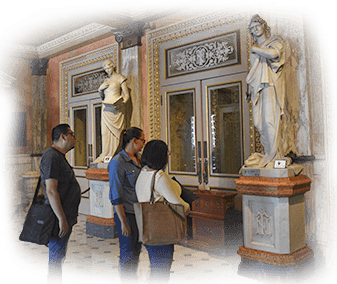
We hope that your stay in our country will be an unforgettable experience and that when you return to your home country, you will share with your family and friends the ways to travel pleasantly and respectfully with the environment.
You can visit our website where we include more responsible recommendations for your stay in our country.
Thank you and Pura Vida!
What to pack?
Hello!
My name is Sandra, and today I will give you some tips about what you should pack for your trip to Costa Rica!
- First, the suitcase shouldn't be too large and should have a packing weight of 40 pounds.
- For the international flight we recommend having certain articles in your carry on, in case your main luggage doesn't arrive with your flight and the airline takes some time to deliver it later.
- Personal medication
- Basic toiletry
- One set of clothing
- Sun block
- If you have a domestic flight on your itinerary, 40 pounds are permitted. The carry on may have 10 pounds
- On destinations like Drake Bay, or Corcovado, the boats have limited luggage capacity.In that case, take an additional light and foldable bag with you, where you can carry up to 30 pounds.
- You are allowed 10 pounds in your carry on. It is more convenient to travel with lighter luggage into these places and its not even necessary to bring everything with you.
- Three items are essential for the protection against rain, sun and mosquitos:
- A raincoat and/or an umbrella
- Repellent containing DEET has shown to be very effective.
Don't fear a mosquito plague, but there is a mosquito who may transmit dengue, zika and chikungunya. Most hotel's windows are equipped with screen and it's not necessary for you to bring a mosquito net. - Sunscreen with Sun protection factor 30 or higher and a hat will help against the high UV radiation.
- In regions higher than 3000 feet above sea level, evenings and nights can be fresh and a light Fleece jacket is recommendable.
- A light trekking shoe is excellent for walks in national parks and around volcanoes. In addition bring tennis shoes or sandals, maybe a dressing shoe for the evenings.
- Clothing should be light and breathable for your outdoor activities. Other than that bring the clothing you like, just make sure its not too bulky. Don't forget your swimsuit!
- You may want to consider using laundry service in the hotels during your journey, thus avoiding too much luggage.
- Electricity outlets are US-standard, flat poles. 110 Volts everywhere. You may need to bring an adapter for your electric and electronic devices.
- Optional articles could be also: Flashlight, binoculars and camera.


We wish you a wonderful journey.